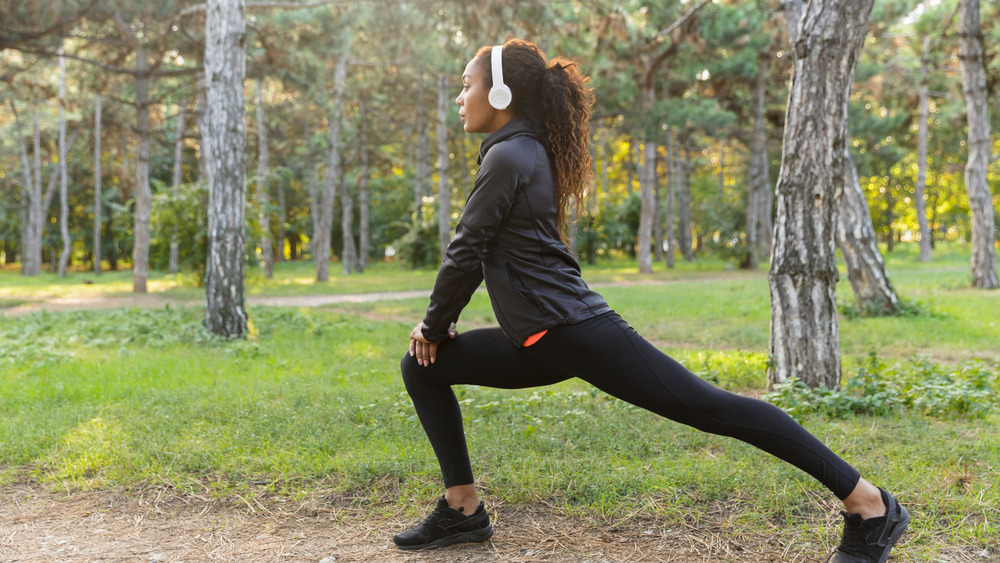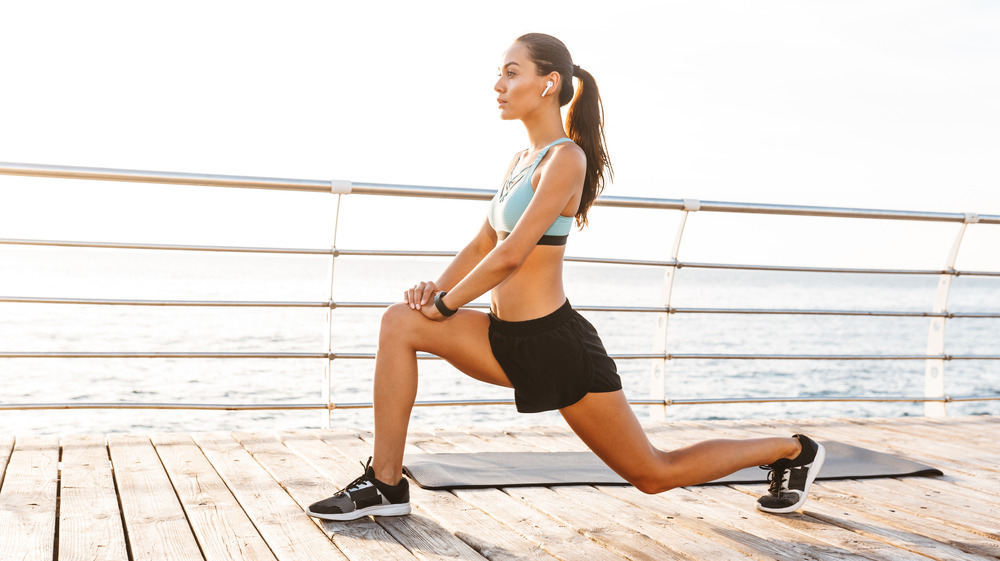Why You Should Add Walking Lunges To Your Workout Routine
For a simple addition to your strength routine that can make a big difference, consider swapping regular lunges out for walking lunges. Whether you do a bodyweight-based routine at home, or you love working out with weights at the gym, a walking lunge can help target hard-to-train leg and glute muscles while challenging core stability and adding a cardio component to your workout.
Not only will your glutes, hamstrings, and quads get toned, you'll also stretch your hip flexors thanks to the movement part of the walking lunge. Compared to a stationary lunge, this allows you to stretch while you strengthen (via Popsugar).
Walking lunges are considered a functional exercise, which means that they emulate real-world movements that a person may need in day-to-day life. In the case of a walking lunge, you're practicing balance, so if you trip while on a hike or while carrying groceries into the house, you'll be more capable of regaining your balance rather than falling over (via Verywell Fit).
How do you do a walking lunge?
If you typically perform lunges at the gym, then a walking lunge is a simple next step: From a standing position, step one foot forward, and bend at both knees to roughly 90 degrees. Your back knee will come close to touching the ground, while your front knee should come forward to right over your ankle. That's a basic lunge: Now, make it a walking lunge by pushing your weight into your front foot and bringing your back foot forward, stepping into another lunge, this time with the alternate foot in front (via the Mayo Clinic).
Continue this process, walking your way across the room, focusing on keeping your torso controlled and upright as you lunge — this is where your abs start to get a workout as well. If you want to add challenge, hold weights in both hands (via Popsugar).
If you're new to lunges, practice static (non-walking) lunges first to ensure that you understand the movement before adding the walking component. And keep your pace slow: The walking lunge isn't meant to be done quickly, it's meant to be done thoughtfully, focusing on slow movement.


